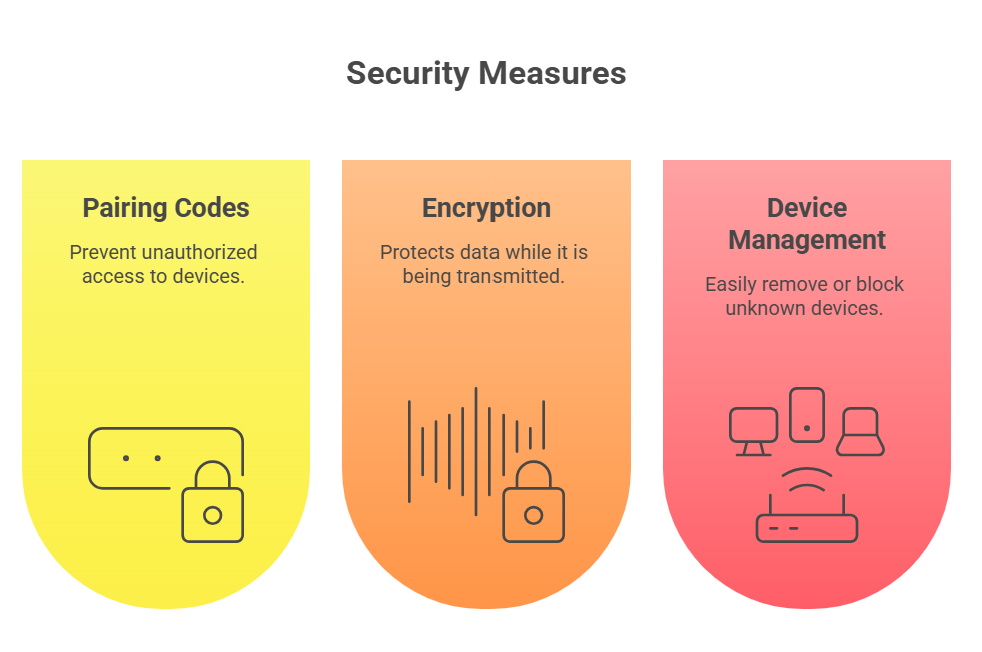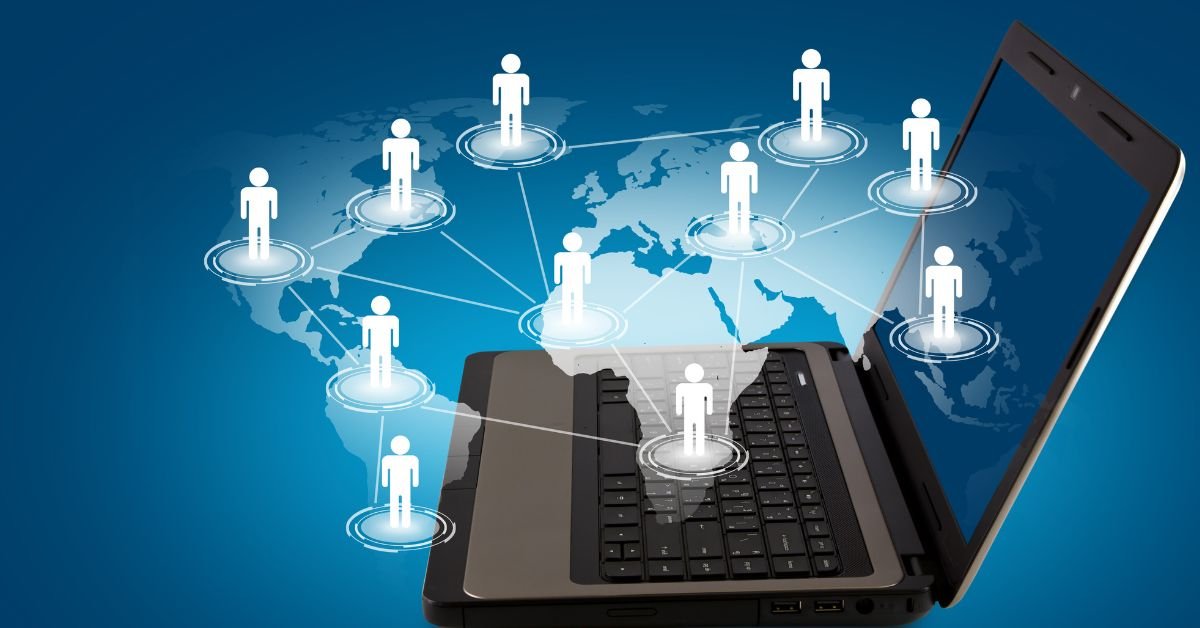Personal area network (PAN) is a network designed for short-range communication between devices in a close proximity typically within a few meters of a person. Think of it as your own private digital bubble, connecting your smartphone, laptop, tablet, smartwatch, wireless headphones, and even your fitness tracker.
PAN Network Definition
In simple terms, a PAN is a network that connects devices within a personal area—usually around 10 meters (33 feet). It’s all about convenience, mobility, and seamless data sharing between your personal gadgets.
Why Do Personal Area Networks Matter in 2025?
With the explosion of smart devices, wearables, and IoT gadgets, the average person now owns more connected devices than ever before. Managing all these devices efficiently is only possible with a robust personal area network.
Real-Life Example
“I love how my phone, watch, and earbuds all sync automatically. I can start a podcast on my phone, pause it on my watch, and pick up right where I left off on my laptop. That’s the magic of a personal area network!”
Types of Personal Area Networks
Not all PANs are created equal. Let’s break down the main types you’ll encounter in 2025.
Wired Personal Area Network
This is the old-school version, using USB cables or docking stations to connect devices. While still used for charging or data transfer, wired PANs are becoming less common as wireless options take over.
Wireless Personal Area Network (WPAN)
A wireless personal area network is the modern standard. It uses technologies like Bluetooth, Zigbee, and infrared to connect devices without cables. WPANs are everywhere—from your home office to your gym bag.
Bluetooth PAN: The Backbone of Modern Connectivity
When most people think of a personal area network, they think of Bluetooth. Bluetooth PAN is the most widely used WPAN technology, powering everything from wireless keyboards to smart home devices.
How Bluetooth PAN Works
Bluetooth PAN creates a secure, short-range network between devices. It’s fast, energy-efficient, and supports both point-to-point and multipoint connections. In 2025, Bluetooth 5.4 and beyond offer even greater range, speed, and reliability.
User Quote
“Bluetooth PAN is a lifesaver. I can connect my phone to my car, my headphones, and my smartwatch—all at once, with zero hassle.”
Wireless Personal Area Network: Beyond Bluetooth
While Bluetooth dominates, other technologies are making waves in the wireless personal area network space.
Zigbee
Popular in smart home devices, Zigbee offers low-power, reliable connections for things like lights, sensors, and thermostats.
Infrared (IR)
Still used in some remote controls and medical devices, IR is limited by line-of-sight but offers secure, interference-free communication.
Ultra-Wideband (UWB)
UWB is gaining traction for ultra-fast, precise location tracking—think digital car keys or advanced AR/VR experiences.
How Does a Personal Area Network Work?
A PAN typically consists of a master device (like your smartphone) and several slave devices (like earbuds, fitness trackers, or smartwatches). The master device manages connections, data transfer, and security.
Key Features
- Short Range: Usually up to 10 meters.
- Low Power Consumption: Ideal for battery-powered devices.
- Automatic Pairing: Devices connect seamlessly, often without user intervention.
- Security: Encryption and authentication keep your data safe.
Setting Up Your Personal Area Network in 2025
Setting up a PAN is easier than ever. Here’s how to get started:
- Enable Bluetooth or other WPAN tech on your devices.
- Pair your devices: Follow on-screen prompts to connect.
- Manage connections: Use your device’s settings to prioritize or disconnect devices as needed.
- Enjoy seamless connectivity: Your devices will remember each other and reconnect automatically.
The Personal Area: Where PANs Shine
The personal area is all about you—your workspace, your commute, your daily routine. PANs are designed to make your life easier, whether you’re transferring files, streaming music, or tracking your health.
Everyday Uses
- Wireless audio: Connect headphones, speakers, and car systems.
- Fitness tracking: Sync data from wearables to your phone.
- File sharing: Instantly transfer photos or documents between devices.
- Smart home control: Adjust lights, thermostats, and security systems from your phone.
PAN Network Definition vs. Other Networks
How does a PAN compare to other types of networks?
- LAN (Local Area Network): Covers a home or office, connecting multiple users and devices.
- WAN (Wide Area Network): Spans cities, countries, or even the globe (think the internet).
- PAN: Focused on one person’s devices, within a small area.
Why PANs Are Unique
PANs are all about personal convenience and mobility. They’re designed for quick, secure connections between your own devices—not for sharing with the whole family or office.
Security in Personal Area Networks
With so many devices connected, security is crucial. Modern PANs use advanced encryption and authentication to keep your data safe.
Common Security Features
- Pairing codes: Prevent unauthorized access.
- Encryption: Protects data in transit.
- Device management: Easily remove or block unknown devices.
Expert Tip
Always keep your device software updated to patch security vulnerabilities in your PAN.

The Pros and Cons of Personal Area Networks
Let’s get real about the advantages and potential drawbacks of PANs.
Pros
- Convenience: Instantly connect and sync devices.
- Mobility: Stay connected on the go.
- Low Power: Great for wearables and battery-powered gadgets.
- Privacy: Your PAN is just for you.
Cons
- Limited Range: Usually only works within a room or two.
- Interference: Too many devices can cause signal issues.
- Security Risks: If not managed properly, can be vulnerable to attacks.
Real-World Example: PAN in Action
Imagine you’re heading out for a run. Your smartwatch tracks your steps and heart rate, your wireless earbuds play your favorite playlist, and your phone logs your route via GPS. All these devices communicate seamlessly through your personal area network, making your workout smarter and more enjoyable.
The Evolution of Personal Area Networks
PANs have come a long way since the days of infrared beaming between Palm Pilots. Today, they’re the invisible glue holding our digital lives together.
Key Milestones
- 1990s: Infrared and early Bluetooth.
- 2000s: Bluetooth becomes standard in phones and laptops.
- 2010s: Explosion of wearables and smart home devices.
- 2020s: Advanced Bluetooth, Zigbee, UWB, and more.
Bluetooth PAN: The Future of Wireless Personal Area Networks
Bluetooth PAN isn’t just for headphones anymore. In 2025, it’s powering everything from smart glasses to medical devices.
What’s New in 2025?
- Bluetooth 5.4: Greater range, faster speeds, and improved security.
- Multipoint connections: Connect multiple devices at once.
- Low Energy (LE) Audio: Better sound quality with less battery drain.
User Tweet
“My Bluetooth PAN connects my phone, laptop, and even my smart fridge. It’s like living in the future!”
Wireless Personal Area Network in the Smart Home
Smart homes rely on wireless personal area networks to connect everything from lights to locks. With PANs, you can control your entire home from your phone or voice assistant.
Popular Smart Home PAN Devices
- Smart bulbs
- Thermostats
- Security cameras
- Voice assistants
PANs and the Internet of Things (IoT)
The rise of IoT has made PANs more important than ever. Billions of devices—from fitness trackers to smart appliances—use PANs to communicate and share data.
Why PANs Are Essential for IoT
- Low power consumption
- Short-range, secure connections
- Easy device management
Risks and Challenges of Personal Area Networks
No technology is perfect. Here are some challenges to watch out for:
- Device overload: Too many devices can slow down your PAN.
- Security threats: Always use strong passwords and keep software updated.
- Compatibility issues: Not all devices play nicely together.
How to Optimize Your Personal Area Network
Want the best performance from your PAN? Here are some tips:
- Limit active connections: Only connect devices you use regularly.
- Update firmware: Keep all devices up to date.
- Manage interference: Avoid using too many wireless devices in a small space.
The Future of Personal Area Networks
As technology evolves, PANs will become even more powerful and seamless. Expect to see:
- AI-powered device management
- Context-aware connections (your devices know when to connect/disconnect)
- Integration with AR/VR and smart environments
FAQs
Q. What is a personal area network and how does it work?
A. personal area network (PAN) is a short-range network connecting your personal devices—like phones, laptops, and wearables—using technologies such as Bluetooth or Zigbee. It allows seamless data sharing and device control within your personal area.
Q. What is the difference between a wireless personal area network and a wired one?
A. wireless personal area network (WPAN) uses wireless technologies (Bluetooth, Zigbee) to connect devices, while a wired PAN relies on cables (like USB). WPANs are more convenient and flexible for most users.
Q. What is Bluetooth PAN and why is it important?
A. Bluetooth PAN is a type of wireless personal area network that uses Bluetooth to connect devices. It’s important because it enables quick, secure, and energy-efficient connections between your gadgets.
Q. How secure is a personal area network?
A. Modern PANs use encryption and authentication to keep your data safe. Always use strong passwords and keep your devices updated to minimize security risks.
Conclusion
Personal area network is the unsung hero of our connected lives. From syncing your smartwatch to streaming music on your earbuds, PANs make everyday tech seamless, secure, and smart. As we move into an even more connected future, mastering your personal area network will help you get the most out of every device you own.
CLICK HERE FOR MORE BLOG POSTS
John Authers is a seasoned and respected writer whose work reflects the tone, clarity, and emotional intelligence that readers value in 2025. His writing blends deep insight with a natural, human voice—making complex ideas feel relatable and engaging. Every piece he crafts feels thoughtful, original, and genuinely worth reading.

